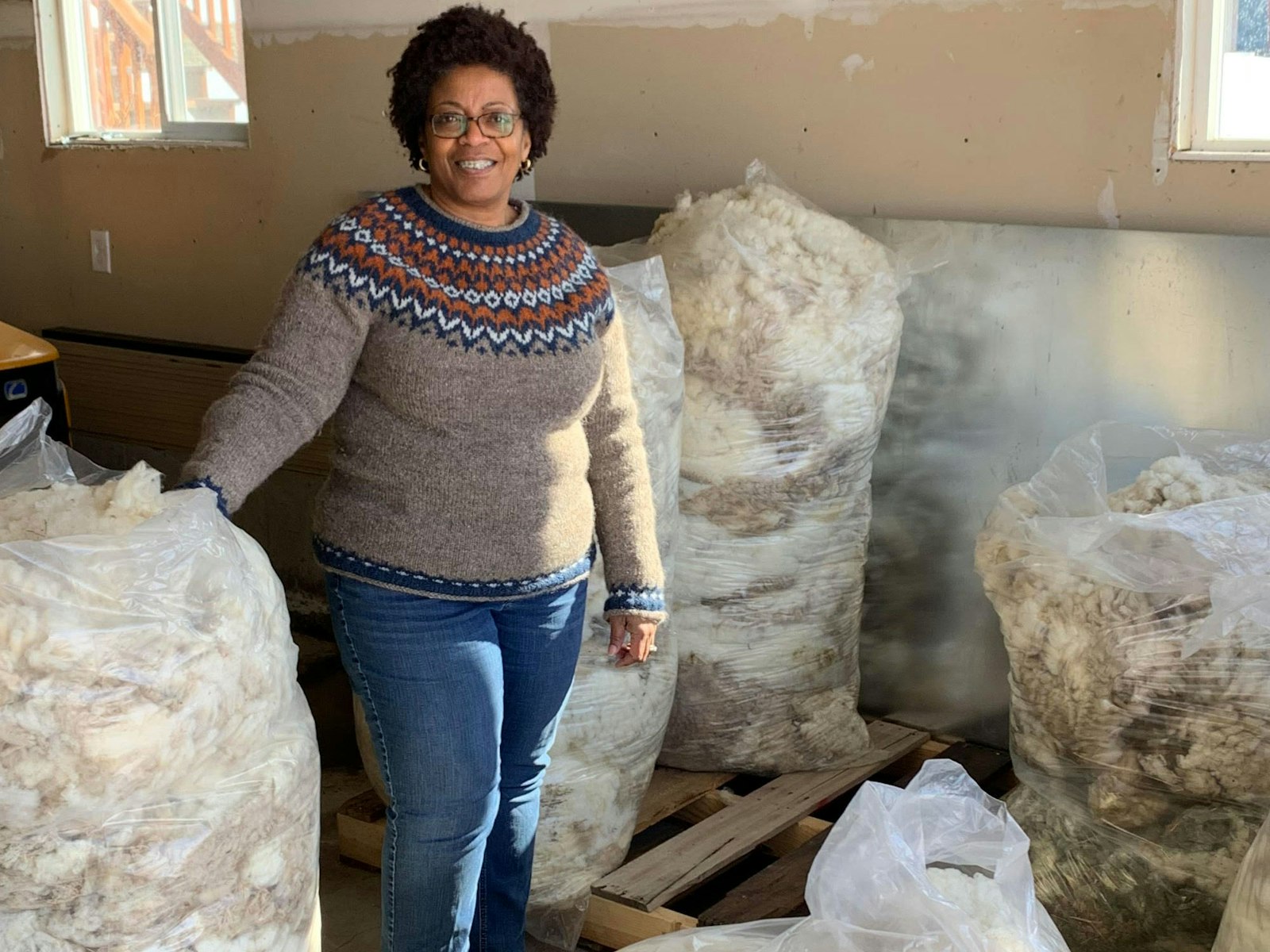Enjoy this extended article by Carol J. Sulcoski from the premier issue of Farm & Fiber Knits. “Farm & Fiber in Fashion” features a handful of companies and designers with a passion for sustainability and a love of Mother Earth who are bringing the farm-to-fiber movement to the fashion world, and vice versa.
Farah Knudsen’s obsession with locally grown, breed-specific wool began when she learned that Utah, her home state, was the fifth largest wool producer in the United States. When she was unable to find Utah-grown yarn in her local yarn store, internet research led her to Cunnington Farms in Moab, about three hours from her home in Provo. Farah visited the farm, bought a bag of Romeldale fleece, and located a mill in Salt Lake City to turn it into yarn. Knudsen Knits was born.
That first batch of yarn set the pattern for Knudsen Knits: Farah seeks out local wool growers, selects fleeces, and works with small local mills to produce yarn. She sells that yarn to knitters through her website and at fiber festivals in the western United States.
Finding the Farmers
Farah joined the Utah Wool Growers Association and placed an ad in their newsletter seeking breed-specific fleeces. She found an agricultural college with a flock of Targhee sheep. Along the way, she was building her network of fiber farmers. It takes more than good fleece to make beautiful yarn, and she is constantly on the lookout for fiber mills, preferably in Utah, that can work with small batches (sometimes just one or two fleeces).
 These Panama sheep from a Utah ranch are a rare breed developed in Idaho in the early 20th century.
These Panama sheep from a Utah ranch are a rare breed developed in Idaho in the early 20th century.
Serendipity has also played a role. While working in her booth at a fiber festival in Southern California in 2022, Farah met a woman whose sister raised Panama sheep on a Utah ranch. Panama is a very rare breed, developed in Idaho in the early 20th century. Farah arranged to attend the 2023 shearing, helped with skirting the fleeces, and bought fleece for Knudsen Knits.
Farah returns to the same farms each year and regularly offers Corriedale, Polypay, Targhee, Navajo Churro, and Romeldale/CVM yarn. She takes special delight in colored fleeces, often labeling those yarns with the name of the sheep who grew the wool.
 Farah examines a Romeldale/CVM fleece to remove the waste portions, a process called skirting.
Farah examines a Romeldale/CVM fleece to remove the waste portions, a process called skirting.
The Challenge of Milling
Of course, it takes more than good fleece to make beautiful yarn. Farah is constantly on the lookout for fiber mills, preferably in Utah, who can work with small batches (sometimes just one or two fleeces). Several mills she works with have shut down in the past two years.
Farah has had to go beyond Utah’s borders to get the yarns she wants. For woolen-spun yarn, she uses a mill in Montana. To find the expertise required to spin fleece from crossbred Navajo Churro/Jacob sheep, she turned to a mill in New Mexico.
 Hand-dyed DK-weight Polypay yarn.
Hand-dyed DK-weight Polypay yarn.
Farah creates the yarns she wants to knit, mostly fingering, DK, and worsted weight, either 2-ply or 3-ply. She hand-dyes a portion of her white wool but celebrates the naturally colored wool by leaving it undyed.
Romeldale was the first fleece Farah had custom-milled, and naturally colored Romeldale/CVM yarns remain her favorites. The range of gray and brown tones, along with the soft and bouncy hand of this yarn, make it a great choice for a wide variety of knitting projects.
Looking Ahead
Farah is looking forward to retiring from her day job so she can devote her time to minimally processed breed-specific yarn. Her motto is “Heritage Yarns—History in Your Hands.” She loves talking with knitters about the benefits of non-superwashed wool and highlighting the characteristics of each breed.
Learn more about Knudsen Knits and Farah’s small-batch yarns, find her yarns for sale, and check out her fiber festival schedule on Instagram @knudsenknits and at knudsenknits.com.
Sandi Rosner (she/her) learned to knit in the late 1970s from the instructions in the back of a magazine. She now works as a freelance designer, technical editor, writer, and teacher. When Sandi isn’t knitting, she usually has her nose in a book. Find more of Sandi’s work at sandirosner.substack.com.

